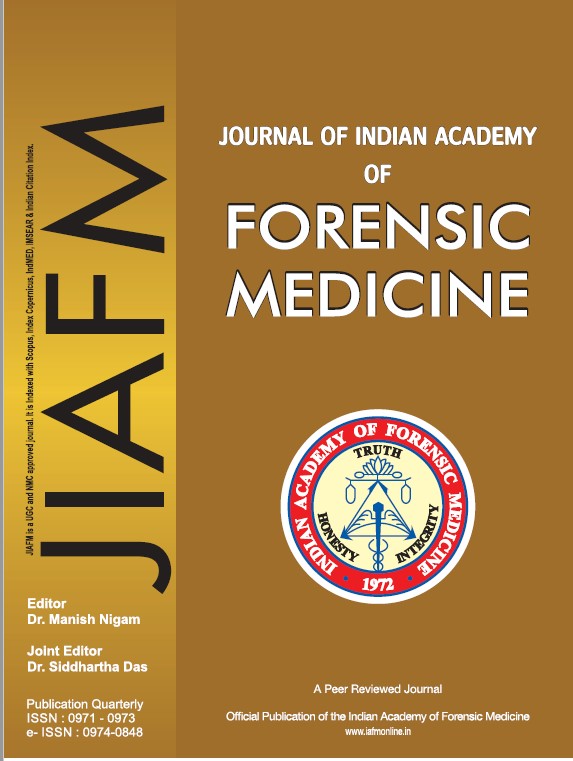The toxicological profile of acute phosphorus poisoning
Keywords:
Hepatotoxicity, Cardiotoxicity, Rodenticides, Phosphorus, RodenticideAbstract
Phosphorus is a very common nonmetallic mechanical irritant and protoplasmic poison which affects the cellular oxidation. Yellow phosphorus is highly toxic and is widely used in fertilizers, fireworks, pesticides and rodenticide pastes. Cases of poisoning by consumption are very common in developing countries. Clinical manifestation ranges from acute hepatitis to fulminant hepatic failure. Even cardiotoxicity and multi organ dysfunction are also seen in this poisoning leading to significant mortality and morbidity. The purpose of this study is to evaluate the clinical outcome, progression of a case of acute phosphorus poisoning and to compare the autopsy and histopathological findings with respect to the duration of survival. It is an observational study conducted on patients admitted to Mcgann Hospital, Shimoga and autopsies conducted in the mortuary. As per inclusion and exclusion criteria cases are included and excluded, and the collected data was entered in a prestructured proforma. Cases were mainly distributed in young adult age group. Few cases were also noted in children which were found to be accidental in nature. There was no such gender variation regarding consumption of this poison. High mortality rate found in this poisoning with hepatotoxicity, cardiotoxicity and cardiogenic shock. Most of the cases with yellow phosphorus poisoning were stable on first and second day, subsequently worsened on third or fourth day with multiple organ dysfunction due to action of the absorbed poison. In most of the autopsies hepatic necrosis was observed as a sign of fulminant hepatic failure. So, the chemical content of poison is very important for the prognosis, intensive monitoring and early interventions.


